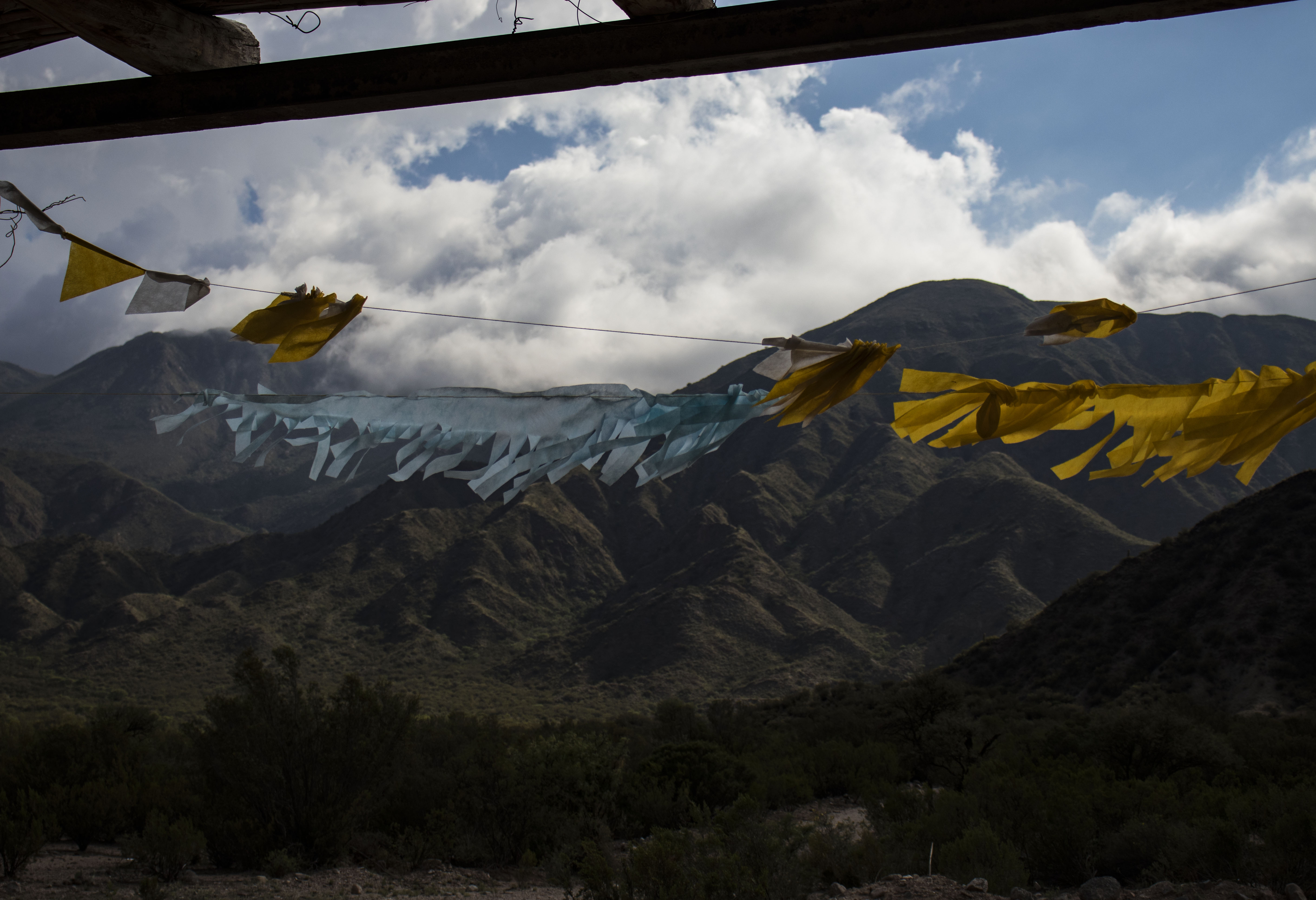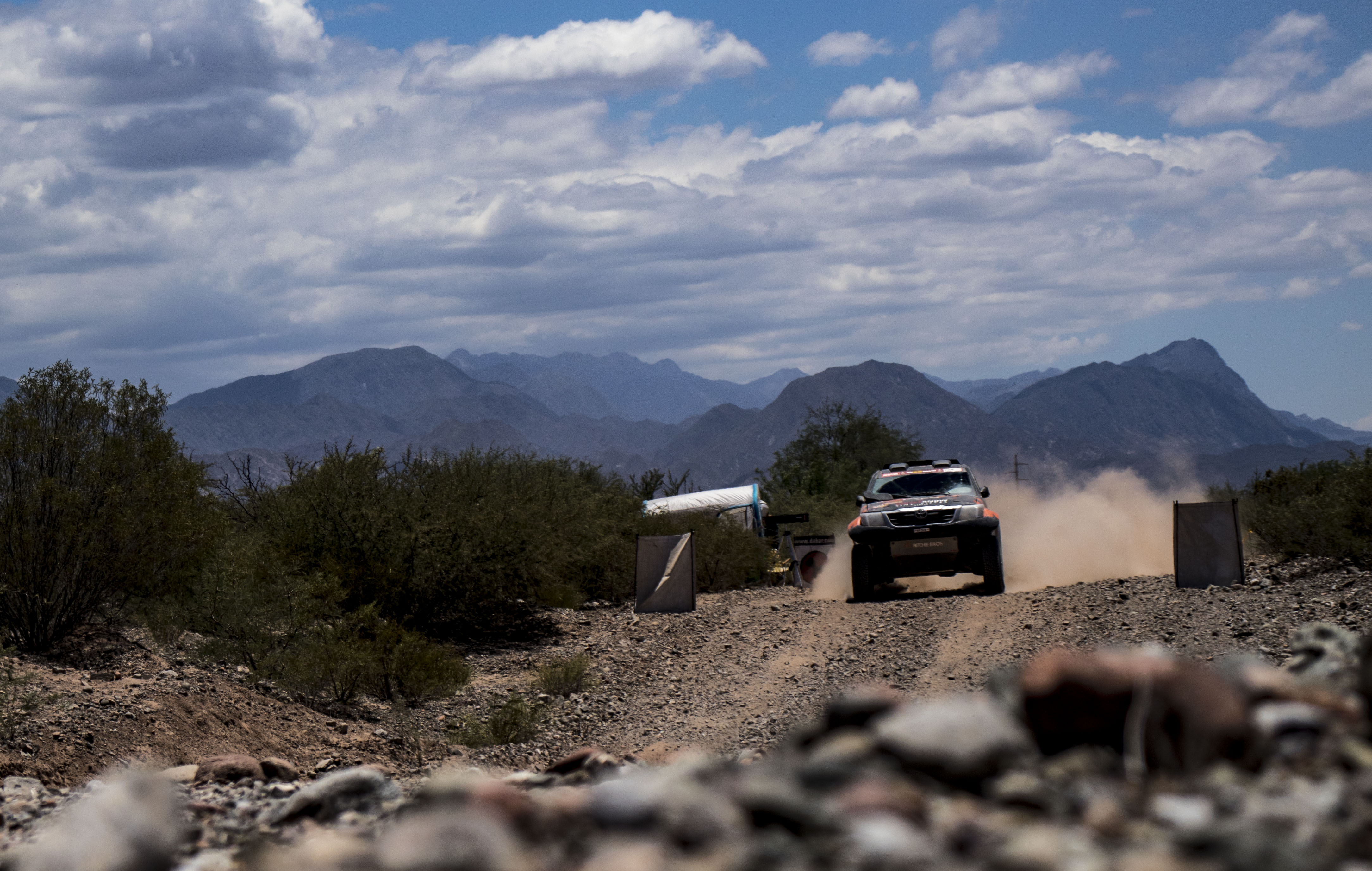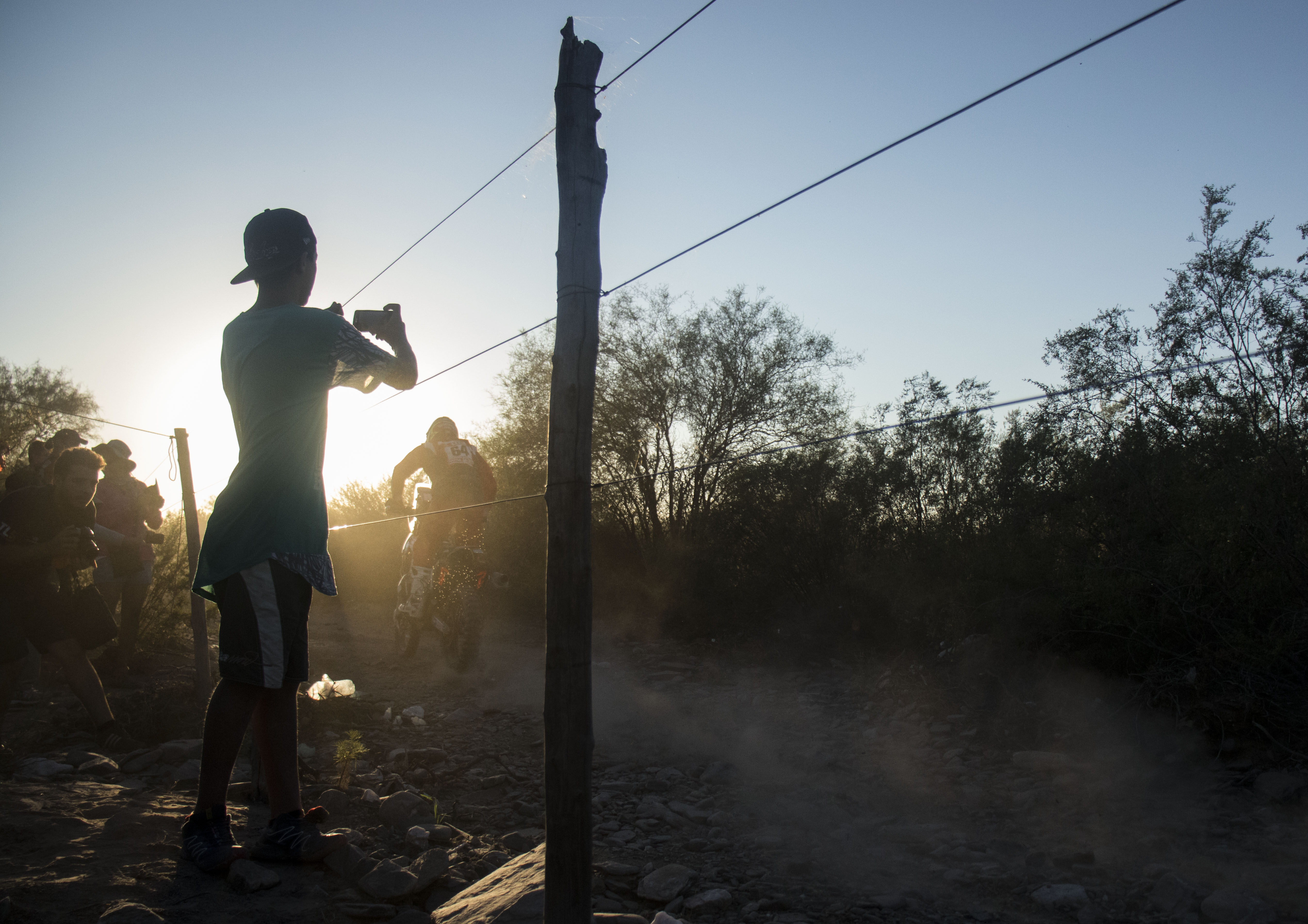Rally Racing Inspires Adventure and Threatens Environment by Shannon Heckt
CORDOBA, ARGENTINA — The Dakar Rally tears across sun-bleached deserts, jagged mountain tops, and seemingly endless rivers in South American countries. It draws people in from around the world and attracts thrill seekers who crave speed and danger in the form of off-road rally racing.
The rally crosses some of the most remote terrain, home to ancient geoglyphs and fragile landscapes. Many believe the rally, that is intended for entertainment and adventure seeking, is detrimental to the environment. According to Fernanda Kalazich, and environmentalist from the Universidad Católica del Norte in Chile, the rally should take place in the European countries where the rally originated.
 Photo by Cody Cottier
Photo by Cody Cottier “I don’t think that the desert is the best scenario for the Dakar… because it’s full of geoglyphs, it’s full of ancient sites. There’s a huge amount of past, of material remains, and settlements,” Kalazich said.
The Dakar is an over 5000-mile off-road race for bikes, cars, trucks, and side by sides to test their racing skills over the course of two weeks and in three different countries. The race traverses the country side and millions of people line the streets of rural cities to catch a glimpse of the vehicles speeding by.
“Because of the very nature of the Dakar, it’s impossible to foresee the damage that can be done,” Kalazich said.
“I don’t think that the desert is the best scenario for the Dakar… because it’s full of geoglyphs, it’s full of ancient sites.”
An entire committee, beginning in March, meets to plan for the next year’s route. Sports Director and former Dakar competitor Marc Coma is part of the committee setting the route. They work together with the governments of the cities and countries in the surrounding areas to deal with any cultural or political issues.
“We need interesting profile countries with a specific geography to make a route work. But then you have to take in account logistics, also politics, and finally sport,” Coma said.
 Photo by Cody Cottier
Photo by Cody Cottier There is a long history of motor sports in Argentina, thus causing a great fervor in the public for this event. The Association of Professional Archaeologists of the Argentine Republic said along the route there is a large influx of people which causes great economic benefit, leading the drawbacks to be ignored.
“…authorities seem not to be aware about the negative impact of the Dakar Rally on irreplaceable public goods. Rather they seem to privilege business and entertainment over the protection of citizens…” the AAPRA said in a statement.
Kalazich said the route plans are handed over to the National Monuments Council only about two weeks ahead of the start of the race. She says this is not enough time for the impact assessment to be accurate and thorough.
“Because of the very nature of the Dakar, it’s impossible to foresee the damage that can be done.”
The Dakar moved to South America from Africa in 2009 because of terrorist threats. The route is now banned from Chile, but with new government power environmentalists believe the rally could make are return to it’s deserts.
The Dakar organization prides itself on its efforts to offset its carbon footprint by helping other places around the world with various philanthropies. Kalazich believes the damage is still being left behind in the South American deserts where the rally is hosted each January.

No legal action is currently in place in Chile since the rally left its borders in 2015. Kalazich says if the race is to return, legal measures and vast press coverage will be needed to protect these precious sites.
While the controversy follows the race’s dust trail, supporters of the rally find the danger and ruggedness of the rally to be inspiring.
“My goal was to find the values that makes this event special: the hardness of the stages, the adventure to go beyond yourself, and to challenge yourself,” Coma said.
“We need interesting profile countries with a specific geography to make a route work.”
The route for 2019 has yet to be released. The year-long process of finding the right amount of challenge for those passionate about rally racing has begun. Only time will tell if the Dakar will make its return to the Atacama Desert in Chile. As competitors prepare for the terrain, so do protectors of the environment.

Coma did not immediately respond to comment on the statements made by environmentalists. ♦
Credits
Website made by Washington State University student Yasmeen Wafai.
